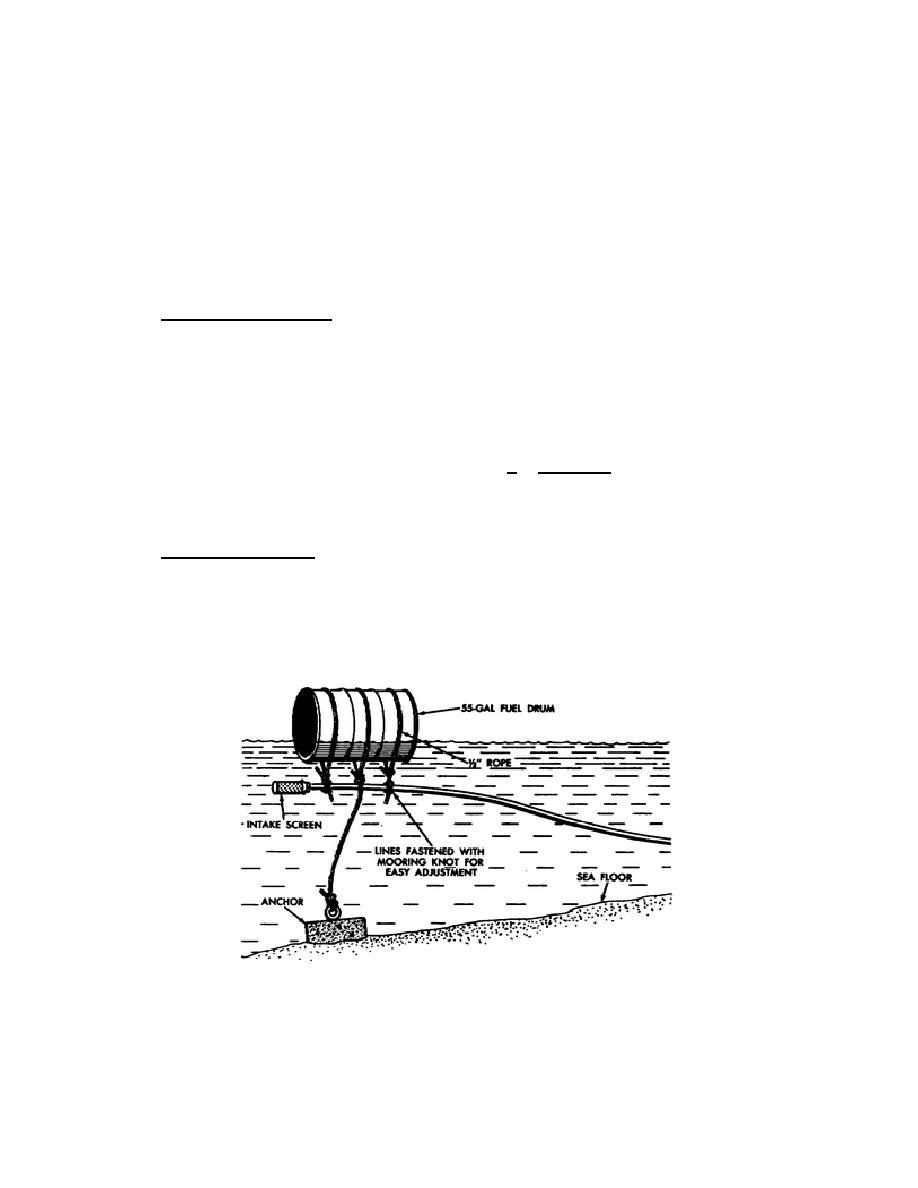
fall of the water level with tide.
may be used but should be located in
Distillation
equipment
located
on
deep water beyond the surf. They must
sheltered bays, harbors, lagoons, or
be positioned vertically and be off
estuaries can be supplied by intakes
the bottom but still beneath the water
constructed in the same way as fresh-
surface at low tide.
In this way
water surface intakes.
On small
foreign materials in the water which
islands where there is insufficient
might
cause
excessive
wear
on
surface and ground water, and on or
distillation equipment will be largely
near
open
beaches,
intakes
for
excluded.
The rigid pipe type intake
distillation
equipment
can
be
can be paced on timber supports and
constructed as follows:
anchored
securely
in
position
by
piling or riprap.
Floats securely
(1) Salt water wells.
Beach
anchored can support the intake screen
wells should, If possible, be used in
in much the same manner as in surface
preference to offshore intakes. Wells
waters (fig 9). A rubber suction hose
can be dug to tap fresh or salty
can be used to connect the rigid pipe
ground water.
This eliminates the
on
the
sea
bottom
to
the
pipe
problems caused by tides, surf, and
supported beneath the float.
shallow water close to shore.
Such
6.
RAINWATER
wells have an added advantage in that
they can be constructed back of the
shoreline
under
natural
overhead
a. Quantity.
In regions such as
concealment.
Driven and jetted wells
tropical
islands
where
there
is
may also be used effectively at beach
abundant rainfall and rapid surface
locations.
runoff,
rainwater
is
the
primary
source for the inhabitants, however,
(2) Offshore intakes.
Offshore
the quantity of water available may
intakes are sometimes required because
not
be
sufficient
to
supply
the
of lack of time, men, or equipment or
needs of both the civilian population
because of coral conditions which
and the military.
Rainwater as a
prohibit well construction.
Intakes
source may be sufficient for small
of either the rigid pipe or float type
units for limited operations, but
Figure 9.
Float type sea water intake.
3-8




 Previous Page
Previous Page
